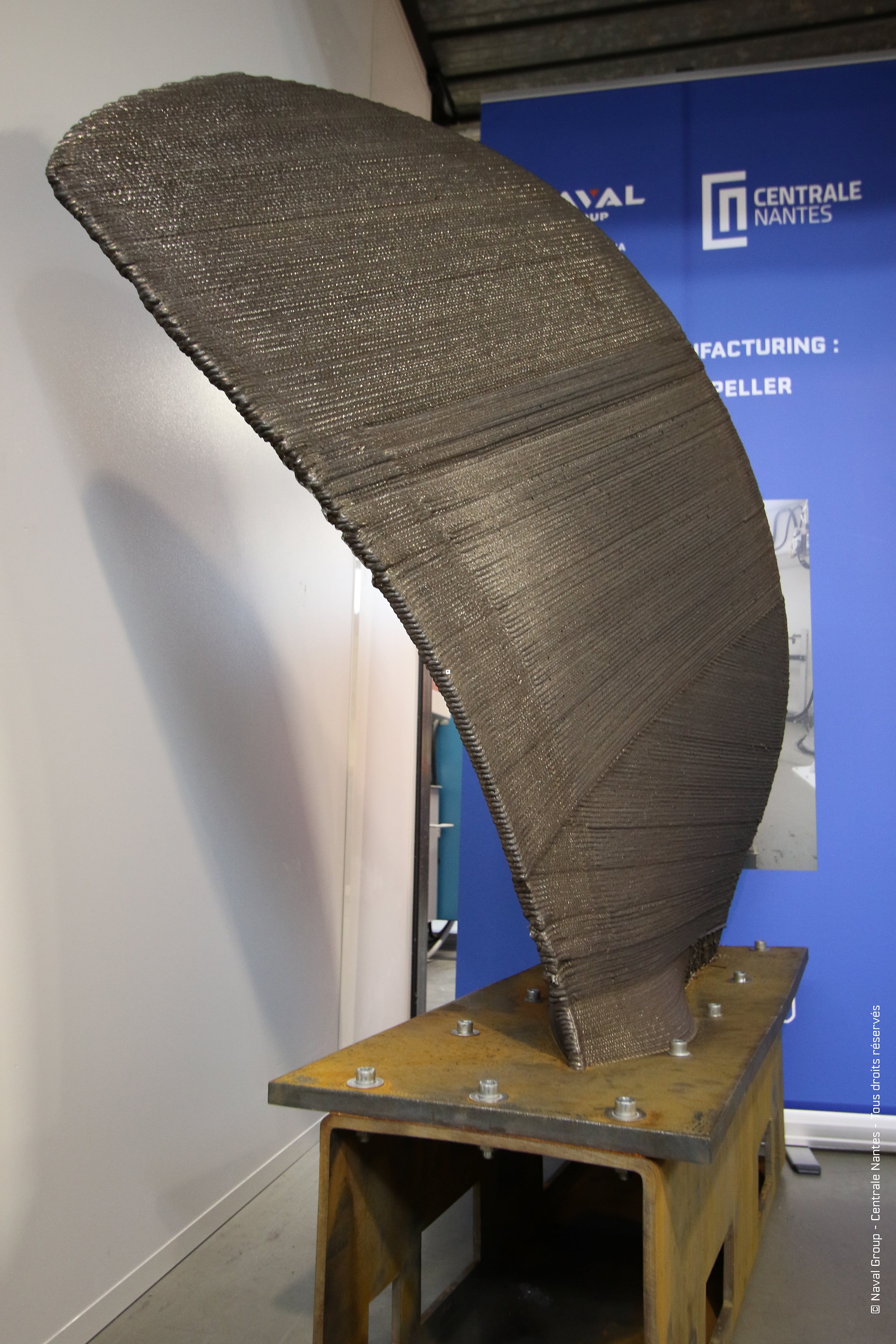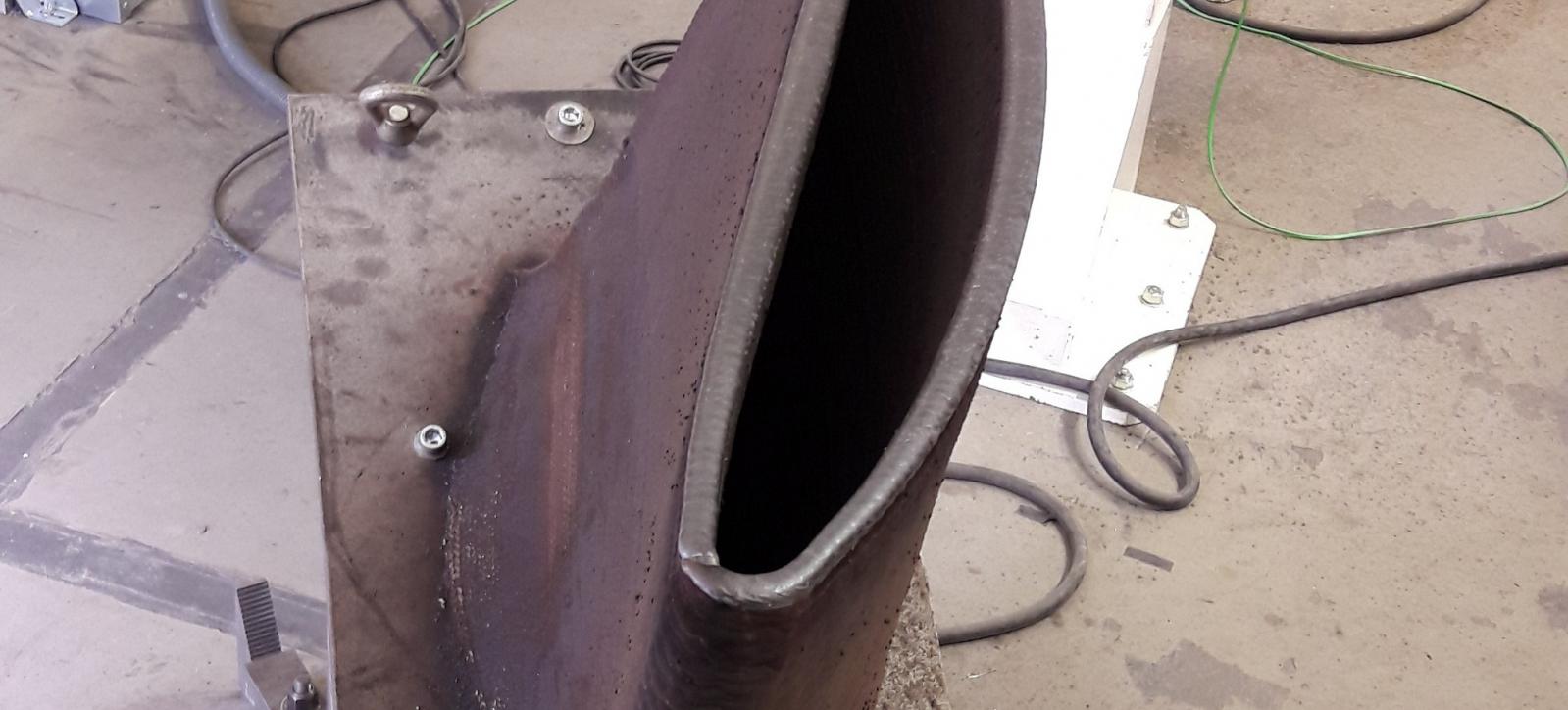In order to improve vessel propulsion, Centrale Nantes and Naval Group are using additive manufacturing to design large parts (propellers of 6 metres in diameter), which could not be produced thus far using traditional manufacturing technologies. Implementing the Wire Arc for Additive Manufacturing (WAAM) process allows for the printing of large parts and paves the way for the production of propellers with more complex geometry.
Substantial industrial gains
The one-third scale hollow blade demonstrator, representative of a container ship propeller, was printed in stainless steel in less than one hundred hours, weighing in at about 300 kg. The teams’ sheer technical prowess means that weight gains of over 40% will be achievable compared to conventional processes.
Significant operational gains
Sirehna, a Centrale Nantes spin-off and subsidiary of Naval Group, is piloting the blade design in order to improve propeller energy efficiency and reduce their environmental impact. Sirehna's work has led to an overall optimization of blades in terms of efficiency and endurance, but also a significant reduction in radiated noise and vibrations. Reducing the environmental footprint linked to propulsion, as demonstrated in the H2020 RAMSSES project case study, is a challenge for all types of vessels, and particularly for large container ships.
Naval Group and Sirehna have been able to count on the exceptional technical resources and extensive knowledge offered by Centrale Nantes. The school’s expertise in trajectory generation and additive manufacturing is needed to produce the blade. This long-standing co-operation, which took on a formal footing in 2016 with the creation of a joint laboratory (JMLT2), feeds through to control over the entire digital chain from design to mechanical dimensioning and hydrodynamics to manufacturing, and will lead to the production of a complete propeller.
Naval Group’s Patrice Vinot, Propeller Package Manager for the RAMSSES project, underlines the challenge of such a manufacturing process: "Although additive manufacturing is increasingly present in industry, the programming and design of complex parts, such as propeller blades for ships, represents a considerable challenge for our teams and our partners. The potential of the process revealed by this new case study means that we now anticipate unparalleled performance for the propellers of tomorrow. Taking part in projects such as RAMSSES and coordinating our network of academic and industrial partners will allow us to bring 3D printing into shipyards for the long term."
Professor Jean-Yves Hascoët, head of the Rapid Manufacturing Platform at Centrale Nantes and international expert in additive manufacturing: “Addictive manufacturing has been developed over the last 35 years on the Rapid Manufacturing Platform. All these years of research come to fruition through a project like RAMSSES, which represents a real transfer of our technologies into an industrial environment.”

1 RAMSSES: Realization and Demonstration of Advanced Material Solutions for Sustainable and Efficient Ships. 48 months of collaborative program, 21 work packages, 37 partners of 12 countries, marked by the presence of the main shipyards (Damen, Meyer Werft, Chantiers de l’Atlantique, Naval Group…) and European maritime research laboratories (including TNO in Netherland and the Research Institute of Sweden), RAMSSES is indeed a megaproject. Its ambition is to implement and demonstrate via experimentation campaigns that new advanced material solutions in shipbuilding can lower the environmental footprint.
2 JLMT: Joint Laboratory of Marine Technology. Created in 2016 the JLMT is a joint laboratory in industry and research which the general objective is to mobilize academic and industrial skills of Centrale Nantes, Nantes University and Naval Group in order to result in qualified innovation for Naval Group’s industrial applications in the field of naval construction.

